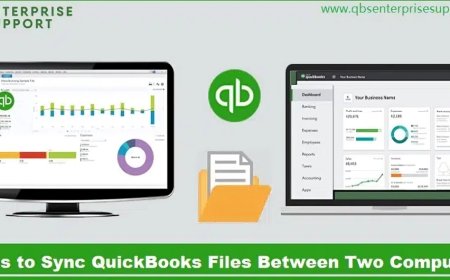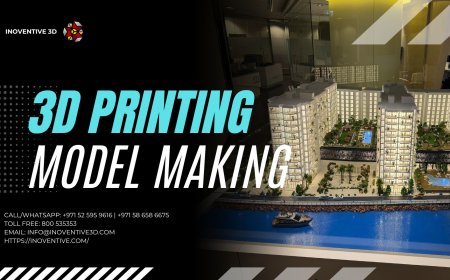Top Customer Experience Management Software Solutions
To meet these evolving demands, businesses are increasingly turning to customer experience management software to streamline and enhance their customer journeys.

In the modern business landscape, delivering a seamless and memorable customer experience has become more than just a value-addit's a strategic imperative. Customers today expect personalized, consistent, and efficient interactions with brands across every touchpoint. To meet these evolving demands, businesses are increasingly turning to customer experience management software to streamline and enhance their customer journeys.
What is Customer Experience Management Software?
Customer experience management software (CEM or CXM) is a digital solution designed to help businesses monitor, analyze, and improve every interaction a customer has with their brand. These platforms collect data from various customer touchpointssuch as websites, mobile apps, call centers, and in-store interactionsand transform that information into actionable insights.
By using this software, businesses can gain a 360-degree view of the customer journey, allowing them to deliver personalized experiences, resolve issues faster, and build long-term customer loyalty.
Why Is Customer Experience So Important?
According to research, customers are willing to pay more for a better experience. Moreover, a single bad experience can lead to customer churn and negative word-of-mouth. In a competitive marketplace, how you treat your customers is often what sets you apart from your competitors.
Thats why having an efficient customer experience management software system is criticalit gives you the tools needed to understand your customers expectations and consistently exceed them.
Key Features of Customer Experience Management Software
Leading CEM platforms are packed with features that empower businesses to manage and improve the customer journey across all channels. Here are some of the most common functionalities:
-
Customer Journey Mapping: Visualize and analyze every stage of the customer experience, from awareness to post-purchase.
-
Feedback and Survey Tools: Collect customer feedback through automated surveys, NPS (Net Promoter Score), CSAT (Customer Satisfaction Score), and more.
-
Sentiment Analysis: Use AI to interpret the emotions behind customer interactions, emails, or reviews.
-
Real-Time Data Analytics: Monitor interactions as they happen and respond quickly to trends or issues.
-
Omnichannel Integration: Combine data from various sourceslike social media, emails, chats, calls, and in-store activityinto a single dashboard.
-
Personalization Engines: Use customer behavior data to deliver personalized messages, product suggestions, or support options.
With these features, businesses can not only track performance but actively improve customer satisfaction, retention, and advocacy.
Benefits of Using Customer Experience Management Software
The advantages of implementing customer experience management software are numerous and measurable:
-
Improved Customer Satisfaction: By identifying pain points and addressing them promptly, businesses can significantly enhance the overall experience.
-
Increased Customer Loyalty: Personalized and efficient service encourages customers to return and recommend the brand.
-
Data-Driven Decisions: Real-time insights help teams make informed decisions based on actual customer behavior and feedback.
-
Operational Efficiency: Automation reduces the time and effort required to gather and interpret customer data.
-
Enhanced Employee Productivity: A unified platform equips employees with the tools they need to provide faster, more effective service.
When used effectively, customer experience tools can Transform Your Business by aligning people, processes, and technology toward one common goal: customer satisfaction.
Top Customer Experience Management Software Solutions
Many powerful CEM tools are available on the market, catering to businesses of all sizes and industries. Here are some of the most trusted and widely used platforms:
-
Qualtrics XM: Known for its powerful analytics and intuitive dashboards, Qualtrics helps companies manage every aspect of the customer experiencefrom surveys to predictive intelligence.
-
Medallia: Specializes in real-time feedback collection and uses AI to identify emerging trends and insights.
-
Zendesk: Originally a helpdesk platform, Zendesk now offers a full suite of tools for customer support and experience management.
-
HubSpot Service Hub: Offers automation, ticketing, and customer feedback features that are perfect for small to mid-sized businesses.
-
Freshdesk (by Freshworks): Provides omnichannel support, automation, and customer satisfaction tracking in an easy-to-use interface.
-
Salesforce Service Cloud: A robust, enterprise-level solution that integrates seamlessly with CRM and marketing tools to provide a holistic view of the customer.
Each of these platforms offers different strengths, so its important to assess your unique business needs when choosing the right solution.
How to Choose the Right Customer Experience Management Software
Here are some important considerations when selecting the best CEM software for your organization:
-
Scalability: Will the software grow with your business?
-
Ease of Use: Is the platform user-friendly for both employees and administrators?
-
Integration: Can it integrate with your existing CRM, marketing, and analytics tools?
-
Customization: Does it allow you to tailor surveys, dashboards, and workflows?
-
Support and Training: What level of customer support and training is provided by the vendor?
Conducting a trial or demo is highly recommended to ensure the software aligns with your goals and operations.
Trends in Customer Experience Management
The world of customer experience management software is constantly evolving. Here are a few trends that are shaping its future:
-
AI and Machine Learning: Automating customer interactions and providing predictive analytics for proactive engagement.
-
Voice of the Customer (VoC): Placing even greater emphasis on capturing and acting on customer feedback.
-
Real-Time Personalization: Delivering customized experiences instantly based on live data.
-
Mobile Optimization: Ensuring a seamless experience for users interacting via smartphones and tablets.
-
Employee Experience Integration: Linking employee satisfaction and performance with customer outcomes.
Staying ahead of these trends can help your business offer an experience that exceeds customer expectations.
Real-World Example
A retail chain implemented customer experience management software to analyze post-purchase feedback and monitor customer service interactions. Within six months, customer satisfaction scores improved by 30%, and repeat business increased by 20%. This illustrates how effective tools can make a tangible difference in business performance.
Conclusion
In todays experience-driven economy, businesses can no longer afford to overlook the importance of managing customer interactions. Implementing a robust customer experience management software solution enables brands to monitor, analyze, and optimize customer journeys like never before.
From collecting meaningful feedback to offering real-time personalization, these platforms help businesses stay connected to their customers and ahead of their competition. Investing in the right CEM system is not just a technical upgradeits a strategic move that can truly Transform Your Business.


































